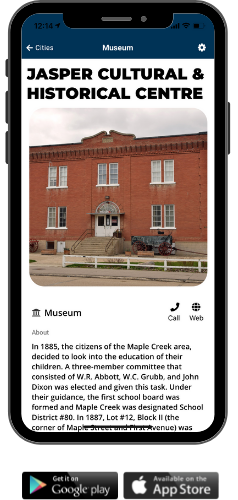Your Digital Playbook: What’s Next?
By Inga Petri
Inga Petri is a digital expert with a national practice in digital transformation in the arts and culture sector. She led the BCMA’s Future Perfect project to explore how to design and produce awesome online and hybrid conferences and events.
The COVID-19 pandemic shuttered much of normal life beginning in mid-March 2020. In the resulting rush to digital, we have seen how far the arts and culture sector, including museums, has to go to realize the potential of the digital world — to not only market exhibits and events, but explore and adopt digital business models for distribution and presentation.
“Even if cautiously, Canada’s museum sector has been at the forefront of digital innovation for many years.”
In 2001, the Virtual Museum of Canada launched as a single destination for Canadian museum exhibits and bilingual educational resources, featuring a directory of about 3000 Canadian museums and an archive of hundreds of thousands of images. But twenty years later, the VMC was decommissioned due to a combination of factors: outdated user experiences and content, security risks that come with legacy online technologies, and lapsed copyright and contracts [1].
On the one hand, a typical museum’s mandate tends to centre on preserving artifacts, interpreting and educating about the past — not on shaping the future. On the other hand, a digital mindset requires advanced technical know-how and a fearless willingness to experiment, to define and develop new audience experiences that are not always tethered to the physical museum building.
When we cede the playing field to global digital technology companies, we do so knowing that they tend to disrupt brick-and-mortar models without regard for long-established norms. They also often transcend geography and create entirely new competitive frameworks. Consider Google’s Arts & Culture portal that was launched in 2011 with seventeen museums from the USA and Europe. Today, its long list of partners counts fifty Canadian museums and galleries among them. Each has invested in virtual exhibits using 360° video walk-throughs. This surely is a good thing, but it’s worth questioning how it supports the future of the Canadian museum sector as a whole.

So how can museums become digital leaders? First, it is important to understand emergent digital consumer experiences and technologies that drive them:
- Mobile devices have become dominant modes of accessing online content.
- Social media networks have become dominant content platforms.
- Voice-based virtual assistants like Siri, Alexa, or Google Assistant are changing how consumers interact with the internet as a voice-based application.
- The rise of the semantic web has been transforming access to your content, which means digital service providers like Google use it to provide answers on their own platforms, thus increasingly bypassing your website.
- 4G networks, introduced in Canada in 2012, have enabled the sharing of HD video, digital streaming services, and video-based social media platforms.
- The much faster 5G networks have become available in Canada starting in 2020 and soon we can expect ever more lifelike digital experiences to become ubiquitous, like streaming virtual reality experiences, 3D video streaming, augmented reality applications, and more.
And what does that mean for museums? That there is a great deal of opportunity to be seized:
- Digital dissemination platform: The most successful, sustainable digital business models are predicated on being aggregators of content and owning the distribution platform. With the demise of VMC, funding to create online exhibits and experiences is now available from Digital Museums Canada. Can museums band together to create and distribute awesome digital experiences about the stories and artifacts they preserve?
- Digital tourism: Can museums effectively move their interpretation and dissemination activities into the digital realm? In doing so, can they reach audiences far beyond the normal geographical catchment of their region, and thus provide valued digital tourism experiences?
- New curatorial-digital teams: Augmented and virtual reality will become more ubiquitous as 5G networks allow for streaming larger and larger files directly to consumers. Can museums invest in the human resources needed to build cross-functional curatorial-digital teams to develop a new breed of experiences that will be highly valued by audiences?
- Online events: Looking beyond Zoom lectures, can museums develop engaging live experiences that enthral online audiences and share fascinating information with their publics?
Much work has been done in recent years on the digitization of arts, culture, and heritage information. The time is now, in 2022, for museums to become digital leaders and look at developing well-considered, future-oriented digital action plans that allow them to fulfil their mandates while building new kinds of digital revenue streams.
[1] “Digital Museums Canada Decommissions the Virtual Museum of Canada Website,” Digital Museums Canada, https://www.digitalmuseums.ca/vmc-decommissioned/ (accessed January 22, 2022).




